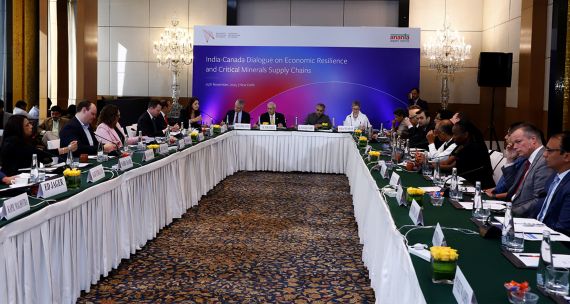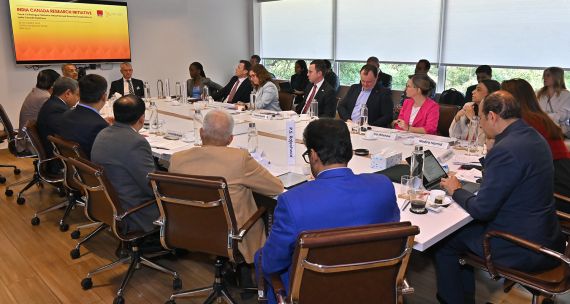A recent report by the Canadian Bureau for International Education revealed a troubling gap in Canada’s learning-abroad performance: India is not among the top 15 destinations. Moreover, when Canadian post-secondary students were surveyed about their top three countries of interest for international experience, only four percent mentioned India. In fact, India was outranked by Denmark, Ireland, and Costa Rica. Given that only a very small percentage of Canadian post-secondary students participate in learning-abroad programs – about three percent a year – this means that the percentage who are getting quality, hands-on study and work experience in one of the world’s most important countries is negligible.
India’s under-representation should cause alarm when we consider the following:
- Within the next few years, India will surpass China as the world’s most populous country. With more than 1.3 billion people, it beats the next-largest country, the United States, by nearly a billion. Roughly one in six people alive today lives in India, but only a tiny fraction of Canadian youth get first-hand learning experience there.
- By the year 2050, when today’s Canadian youth are at the peak of their careers, India’s economy (by purchasing power parity) is expected to the be the second-largest, behind only China. This will give India much greater influence over a global economy in which Canada needs to compete.
At the same time, these rankings mask a complicated economic picture; as one report aptly described it, there are two Indias: “one that appears poised for global success, and one that continues to struggle with weighty economic, social, and developmental challenges” [1] that should concern the entire global community, including Canada.
How do we elevate India’s status as a study-abroad and internship destination for Canadian students? As a first step in understanding the incentives for Canadian students, as well as the hurdles – both practical and perceptual – the Asia Pacific Foundation of Canada (APF Canada) solicited insights and observations from two sources. The first was a pair of roundtable discussions held in early March 2017 on strengthening Canada-India higher-education partnerships. (A summary report of these discussions can be found here.) One of the topics discussed was how to do a better job of encouraging and supporting more Canadian outbound mobility to India. The second source of insights was a series of nearly two dozen semi-structured interviews APF Canada conducted with Canadian students who had recently completed internships in India. Here are some highlights from what we learned:
- Target students with previous international experience. Almost all students we spoke to mentioned that India is “not a country for beginners.” In other words, it helps to have had the experience of living or at least travelling in a place that is quite different from Canada, culturally, linguistically, and developmentally.
- Emphasize the nature of the work or the mission of the organization. Most interns said they were not attracted specifically to India, but rather to the type of experience they would get through their internship. After spending several months on the ground there, their appreciation for and interest in India grew.
- Once students commit to going, try to minimize some of the uncertainties about day-to-day life. This includes, for example, providing information about the student’s workplace or host university, the housing situation, the neighbourhood surroundings, and what safety precautions to take (especially for women).
- Encourage them to go in pairs. Several students commented that navigating life on the ground in India, especially in the first few weeks, felt overwhelming, ranging from language barriers and new cultural norms to the unfamiliar climate, food, and public transportation. Going with another Canadian student helps alleviate the need to be entirely self-reliant in learning so much so quickly.
- But beware of staying in a Canadian cocoon. An important caveat to the point above was raised by a roundtable participant who cautioned that the “safety in numbers” guideline can go too far. When Canadian students travel as larger cohorts, there is a much greater likelihood that they will interact primarily with other Canadians, rather than learning, living, and working alongside their Indian peers and learning from Indian teachers and mentors – which is, after all, the point of the international experience.
- The longer the program, the better. Most interns we interviewed had been in India at least four months, and commented that the value in terms of personal and professional growth was exponentially greater than if they had done a much shorter-term program. While any type of exposure to a country like India can be eye-opening, the longer-term programs force students to adapt and adjust at a level that is especially supportive of developing cross-cultural awareness.
- After they return to Canada, acknowledge and validate students’ experience and professional growth. Before they start their internships or studies abroad, students receive messages about the life-changing nature of their experience and how in-demand their cross-cultural skills will be to future employers. But many students reported that the post-return support and mentoring was weak, and any “reflection” they were asked to do felt impersonal and somewhat perfunctory. (There are important exceptions to this: the University of Victoria’s Centre for Asia-Pacific Initiatives, for example, takes a very hands-on and long-term approach to supporting and mentoring its interns).
As more and more Canadian organizations and individuals think about how we build greater global awareness within our own country, we need to ensure that countries like India are getting their due attention, and that we are following the advice of students who have learned and grown from their experience there.
[1] “Working with a Rising India: A Joint Venture for the New Century,” Independent Task Force Report No. 73, Council on Foreign Relations, 2015, p. 3, accessible at https://www.cfr.org/report/working-rising-india.



